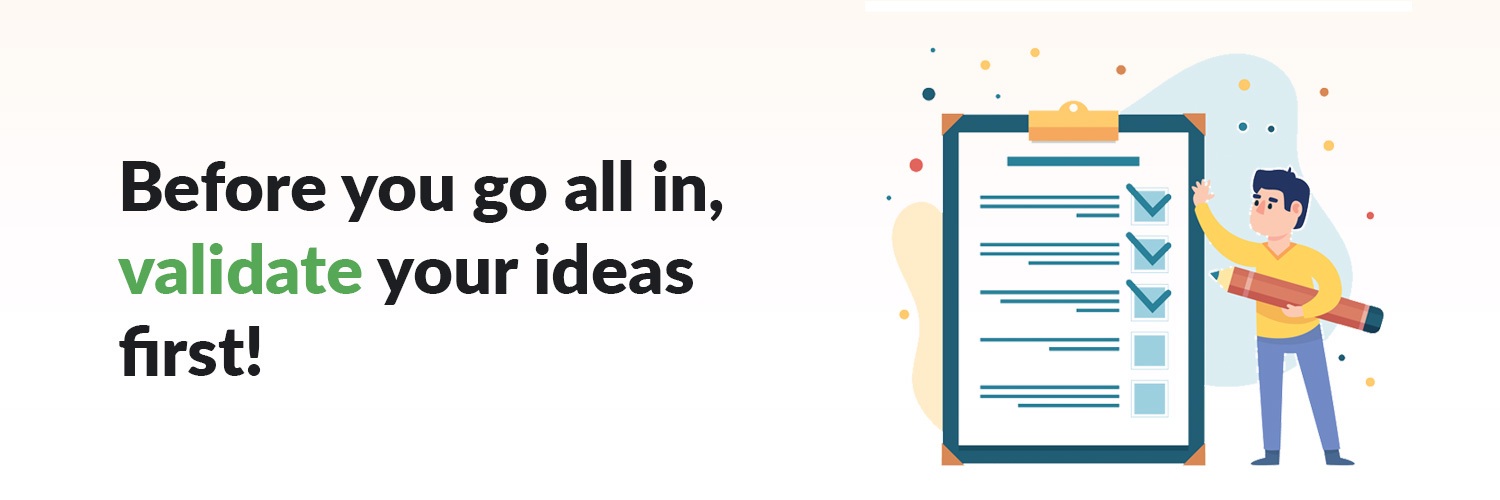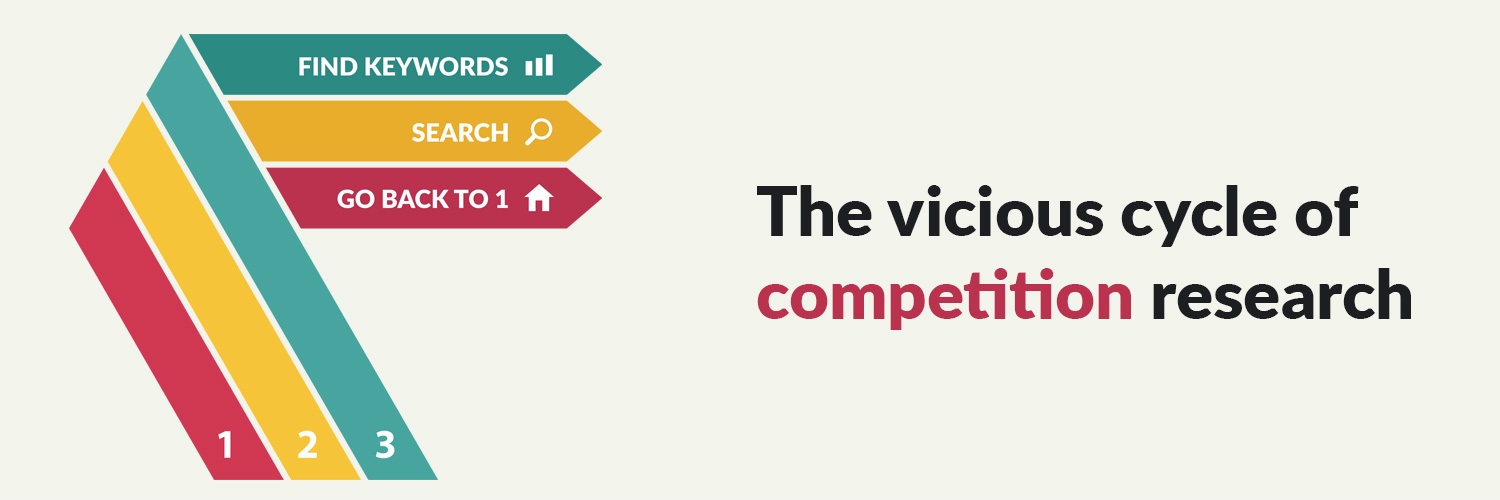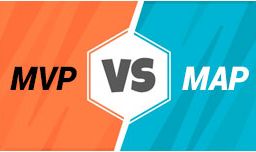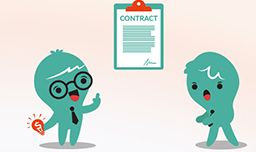How to validate your app ideas?
If you are an entrepreneur, chances are you already know that startup world is tricky! More so with the app startups. Knowing when to take the next step can be nerve-wracking and doing the due diligence is a very important first step that a lot of entrepreneurs miss out. How do you know if your great idea will disrupt the market, or… blow up in your face?
Well, it can go either way, but there is some groundwork that you can do at a minimal cost (or even free) to validate the ideas before investing your hard-earned real dollars into it. The first thing that you might wanna look for is, yep, competition!

The size and scale of this search will differ from industry to industry. Many apps aim for a niche to claim an untapped market, while others may be perfectly happy brawling it out with a dense space. Busier industries will have active communities writing reports and offering their own public research, potentially giving you a better view over the cliff, so to speak.
For now, we will be focusing on the little guy who needs to know what’s in the fog.
So, how and where do we start the research?
The Research Stage
The research stage is usually a three-step process, but as you can imagine, those three steps are not completely straight forward.
- First, we need to know how to define our product and audience. In other words, what keywords can be associated to this product.
- Second, we will need to discern how our audience is likely to search, and when. In simpler terms, if you were looking for a product that you are trying to build, how would you search the good old world wide web.
- Finally, we use that information to search for direct and related information over and over until we are satisfied with our scouting. So, you see, these are just not three steps, you are cycling through these steps multiple times to make sure you have left no stone unturned.

Let’s use an example.
Your new app is going to help shoppers determine where they can get the most deals for a specific diet. This will give us, the Diet Name (We’ll go with Taco Diet, because I wish it was real), Deals, Cheap, Cheapest, Best, Weight Loss, Lose Weight, Lose Fat, Skinny, Lose Size, Beach Body, Healthy Nearby, Near Me, New Diet, Diet, 2019 (or relevant year), Android/Apple etc.
Allow me to introduce something that everyone should have in their toolbox: Google Trends
If you have never used it, this is a researching miracle, allowing you to search every bit of data you could need on any term you can think of. Not only that, it gives you related terms, related topics, and generally gives you the insight you may never have even considered. The idea is to come up with as many possible relevant terms as you can: if your customers can find them, you have a competitor. Remember to keep in mind common misspellings. If a simple typo can get you an edge, it’s worth knowing about. If you plan to do Split Testing down the line (Also known as A/B Testing), make sure to follow up on those ideas as well.

We know our audience for this Taco Diet will likely have tried similar products for other diets. So, if for example, someone wanted a version of the Weight Watchers app for the Taco Diet, they might search for this as well. Think like your customer, try to put yourself in their position, and think what they would be looking for.
Note: When we are searching Google, don’t forget quotes around the terms you specifically want to search; otherwise it will merely search by all of the words in any order.
With this done, we should have found at least some of our competition. Now it’s time to do it all over again. Ideally, you would want to make sure you are looking through results others may not even think to go to, such as going 7 or more pages deep in a Google Search. You may just find that your competition exists, but never optimized their web presence.

If you are trying to pursue an idea that involves a smart device or hardware (Internet of Things), there is another step you would want to try before wrapping up this first part. Let’s say we’ve gone through, and found absolutely nothing. How do we know for sure? If you already searched every term you can think of, there’s always the option of searching through public record databases. While this won’t be fast, you may be able to find companies and patents registered under specific names or track down companies with no online presence. Offline businesses are rare these days, and unlikely to be able to complete outside of their local area, if that. It’s very likely that you may not have any effective competition at launch in this case.
The great thing about all of this is that it’s free, or at least mostly free. Researching your competition with a reasonable degree of accuracy is far easier than it’s ever been, and the internet is just chock full of fantastic resources to help out in this regard. Below are a few that may help out for your specific situation.
Validation
Now that we know our enemy (so to speak), it’s time to know ourselves!
For this, we will be using the data that we found in the first part of our search to get to know our customers better, as well as creating landing pages that will be used to gauge interest and get our early adopters on board.
The Landing Page
Landing pages are simple, and they are going to serve as the funnel for all of the information above. There are many tools out there to make one with no hassle these days. While you can use functionally free options hosting and design options like Wix and WordPress, they are also going to be entirely manual when it comes to funneling your traffic, and also will be absolutely buried in the search results without a custom domain to transfer to. We will ideally use an automated system, such as Airstrip.

Now, this tool is amazing. First off, if you have never made a landing page before, it has the entire template ready to go right as you sign up. All that you need to do is go on and put your product information in there. You assign your pictures, put your logos, and describe your product in a few short blurbs.
From there, all we need to decide is whether this will be a sales page, an information page, or a funnel page. As before, everything is already there; sales pages can put their pricing and links, information seekers can put a questionnaire, and a funnel page can direct your customers to download your new app.
You can even run a split test using this, creating two different variations of a similar landing page, and tracking the results of both for data. This can be crucial in determining which path to take with your product. It should be noted that while using their default domain can still technically be viable, due to comparatively fewer people using this over something like Wix, but a custom domain will usually be needed to get those first page results we’re hoping to nab. Remember that once you are on the first page, you generally will get more and more cemented there as your relevance to your search terms grows through Google’s system.

APPS START-UPS, DO'S & DON'TS
The questionnaire
Asking questions can be hard. Asking good ones may be difficult. Asking wrong questions can leave us sunk. Then what do we put in our questionnaire?
Thank goodness for the internet once again. While questions will vary from project to project, there is a site that can actually set up with already made questionnaires for just about anything out there, and like all of the above, it’s free to use to some extent. Start with industry standards like Surveymonkey or its cool buddy Typeform. You will more than likely find what you need on here. If not, they also have templates and all of the information you could ever need on making a successful questionnaire.

So now we have our Landing Page mostly pieced together, we have out Questionnaire ready to hunt down that sweet, sweet data, and maybe we put a slightly different version out there just to test the waters with some different crowds. Now we need to make sure our pages are using the tags we found to be popular earlier, and we’re ready to launch all of this!
See? It wasn’t that hard, and once you have it all down, you can be out and researching that new project in as little as an afternoon… though maybe spend a bit more time just to be sure 🙂
Good Luck, and good searching!
Book a free consultation with our team if you are looking for a technology partner to take your startup to the next level.








